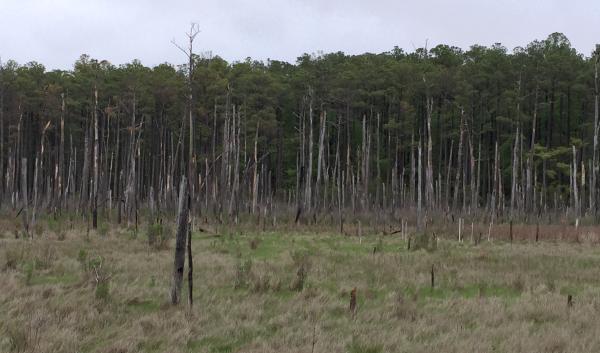Leer en español: Efectos del cambio climático en la acuicultura en el Golfo de Maine
Aquaculture or sea farming, is connected to the health of ocean ecosystems and is impacted by the effects of climate change.
To support this growing industry within the Gulf of Maine region, it is important to understand these climate impacts. Understanding climate impacts is the first step towards strengthening the industry’s climate resilience.
Research briefClimate Impact Synthesis
- Ocean warming increases risk of disease, predation, and organ stress in farmed species.
- A growing warm surface layer in the ocean lacks oxygen and nutrients for farmed species.
- Ocean acidification makes it harder for shellfish to build their shells.
- Warming waters and nutrient loading increases risk of harmful algal blooms.
- Climate change creates conditions that speed the spread of invasive pests and predators into the Gulf of Maine.
- Ocean warming causes an increase in many diseases that affect farmed species.
- Sea level rise threatens aquaculture infrastructure.
- Changes in weather may affect salinity, which has an ideal range for many species.
Ocean Warming / Stratification
Sea surface temperatures (SST) in the Gulf of Maine is rising three times faster than the global average of 0.27 °F per decade since the 1980s (Figure 2). One of the climate-related challenges for aquaculturists lies in matching the species they farm with its habitable zone. As water temperatures increase above habitable tolerances, farmed species are increasingly susceptible to diseases, predators and pests, and organ stress. Changing season length (i.e., longer, hotter summers and shorter, warmer winters) can also affect industry operations both positively and negatively.
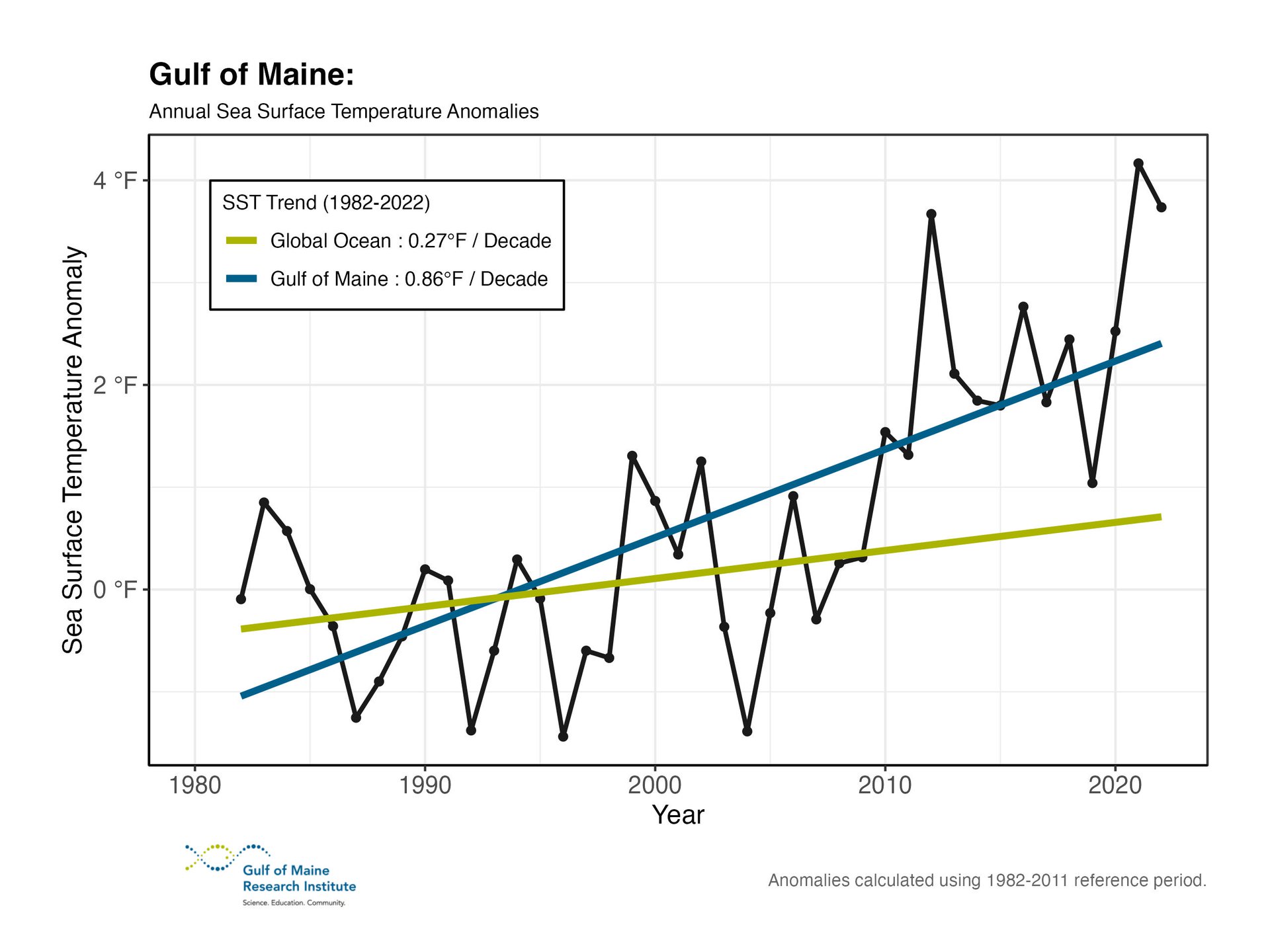
Figure 2: Comparison of annual global sea surface temperature (SST) anomalies to annual SST anomalies in the Gulf of Maine. Data calculated using 1982-2011 reference period. Credit: Gulf of Maine Research Institute
There has also been an increase in stratification as the ocean warms. Stratification is the natural separation of water into layers based on density (Figure 3). These layers do not mix vertically. Warmer waters are less dense and rise to the surface. As the ocean warms, this warmer surface layer has been growing deeper into the water column. Warmer water contains less oxygen and nutrients which, with other impacts, can lead to more hypoxic events (periods of low oxygen that can be fatal to marine animals). These are major risk for most marine species including farmed marine species.
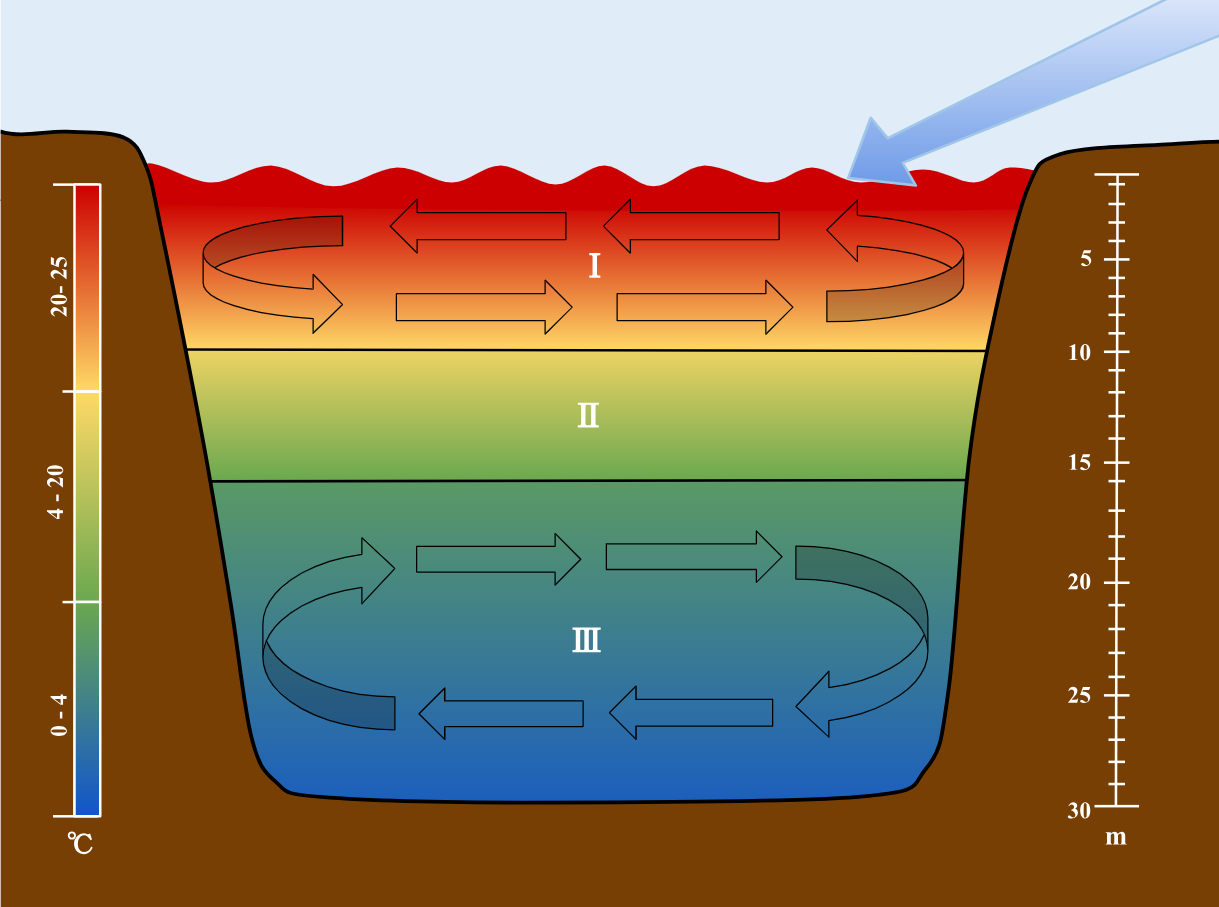
Figure 3: Stratification is the separation of ocean water into horizontal bands based on density, with warmer, less salty water remaining on top. Credit: MBrookings19 licensed under CC BY-SA 4.0
Ocean Acidification
Ocean acidification (OA) is the result of several earth system processes that cause the pH levels in the ocean to decrease. One of the primary causes of OA is the role the ocean plays in absorbing excess carbon dioxide from the atmosphere. The carbon reacts with the sea water to create carbonic acid. Since the pre-industrial era, ocean acidity has already increased by 30%. By 2100, the pH of the ocean is projected to decrease by an additional 0.2 – 0.3 units. In aquaculture, shellfish are the most vulnerable to this change in the marine environment. As the ocean acidifies, it becomes harder for shellfish to build shells. This makes them more vulnerable to predation, and increases the stress placed on major organs, especially at early stages of life. As OA progresses, aquaculturists are likely to encounter difficulties catching wild spat (young shellfish). This process is integral to their operations.
Harmful Algal Blooms
Some algae colonies produce biotoxins that can be harmful to marine organisms as well as the humans who eat them. Warmer waters (as a result of climate change) coupled with increased nutrient pollution have been linked to increased harmful algae bloom (HAB) events. A key climate-related driver to the increased risk for HABs is the occurrence of more heavy rainfall events, causing increased nutrient run-off into coastal waters. Algae uses these nutrients, like phosphorus and nitrogen, to reproduce and when they are present in excess amounts, they can cause a bloom. Juvenile aquaculture species are all susceptible to increased mortality from HABs.
Invasive Pests and Predators
Climate change has increased the spread and geographic range of invasive pests and predators across the globe. Some of these are simply a nuisance while others have more negative effects. The orange sheath tunicate (Botrylloides violaceus) can grow on shellfish and completely cover them, reducing their ability to eat or breathe. Although it can cause the eventual death of the shellfish, it is slow growing and will only affect a small number of them. The European green crab (Carcinus maenas) eats shellfish and has been linked to the demise of the soft-shell clam species (Mya arenaria) in New England. While the green crab has been in New England waters for a long time, the effects of climate change on the marine environment have created a more favorable habitat for this species.
Diseases
Warming waters increase the replication rate, virulence (severity), longevity, and transmission of diseases for aquaculture species. In shellfish aquaculture, there have been increases in cases of Dermo disease (Perkinsus marinus), Multinucleated Sphere Unknown disease (MSX-Haplosporidium nelsoni), Seaside Organism (SSO-Haplosporidium costale), Roseovarius Oyster Disease (ROD- Roseovarius crassostreae) and Quahog Parasite Unknown (QPX- Labyrinthomorpha) (Figure 4). In marine finfish aquaculture, Infectious Salmon Anemia (ISA- Salmon isavirus) and Furunculosis (Aeromonas salmonicida) have also been on the rise. These diseases cause increased mortality in the species, but do not affect humans.
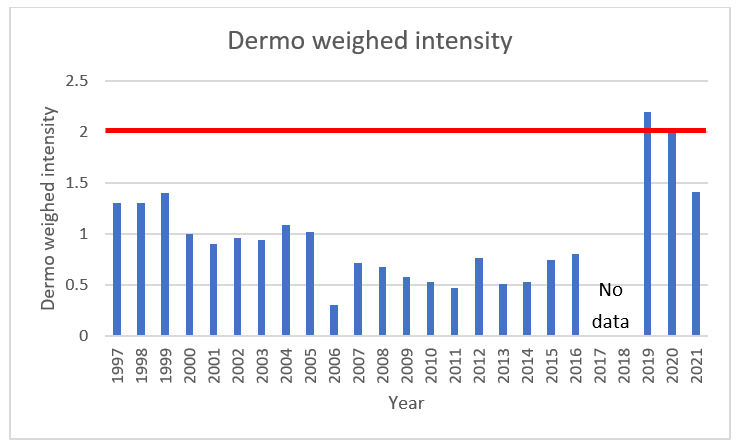
Figure 4: Annual weighted average intensity of Dermo disease (Perkinsus marinus) in Connecticut. Credit: State of Connecticut Bureau of Aquaculture and Laboratory Service
Sea Level Rise
All aquaculture farms rely on a variety of shore-side infrastructure for their daily operations. Sea level rise (SLR) threatens the use and longevity of this infrastructure through increased flood events which cause service disruptions, increase exposure to corrosive saltwater, and accelerate the rate of coastal erosion. Flooding events can impact aquaculture farms by blocking their access to markets and reducing the local water quality due to flooded sewer systems and water treatment facilities. SLR can also increase the rate of coastal erosion, endangering the use of coastal infrastructure such as the roads, buildings, and docks that aquaculturists rely on to get their product to market.
Salinity Changes
Salinity refers to the salt content of water and is affected by many factors, including runoff from freshwater sources, precipitation amounts, evaporation rates, and mixing of ocean and ground water sources. As climate change progresses, each of these factors is expected to change on a regional level, making the prediction of salinity in any given place difficult. What is known about salinity is that it affects mortality rates in several clam species and can weaken oysters’ ability to fight bacterial infections. As with temperature and acidity, there are ranges within which each species is best suited. Outside of those ranges, salinity contributes to an environment of stress which can decrease the productivity of aquaculture farms.
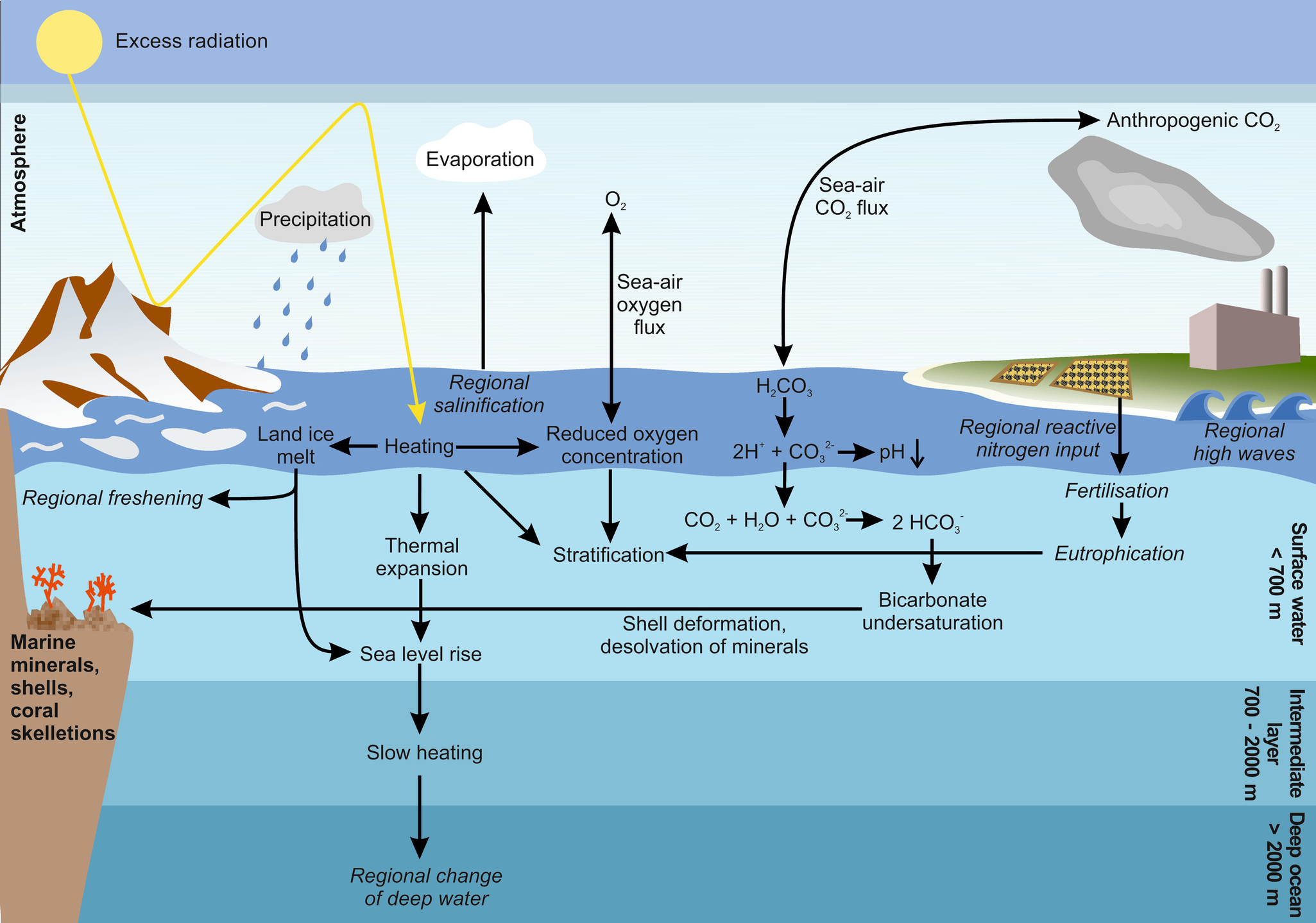
Figure 5: An overview of climate change's effects on the ocean, including the carbon cycle, ocean stratification, sea level rise, and heat transfer. Credit: Laura Käse and Jana K. Geuer is licensed under CC BY 4.0.


